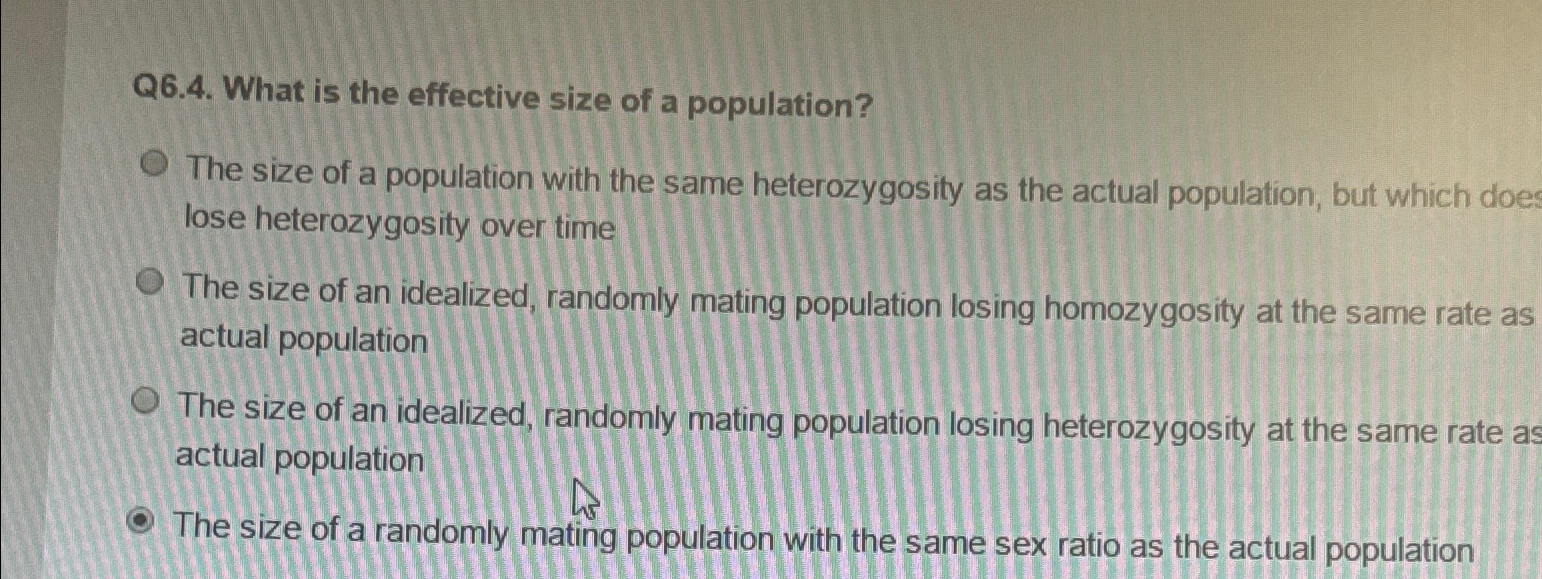QQuestionAnatomy and Physiology
QuestionAnatomy and Physiology
# Q^6.4. What is the effective size of a population?
- The size of a population with the same heterozygosity as the actual population, but which does lose heterozygosity over time
- The size of an idealized, randomly mating population losing homozygosity at the same rate as actual population
- The size of an idealized, randomly mating population losing heterozygosity at the same rate as actual population
- The size of a randomly mating population with the same sex ratio as the actual population
Attachments

6 months agoReport content
Answer
Full Solution Locked
Sign in to view the complete step-by-step solution and unlock all study resources.
Step 1: Understand the concept of effective population size
The effective population size (N\_e) is a key concept in population genetics. It refers to the size of an idealized, randomly mating population that would have the same amount of genetic drift as the actual population. N\_e is often different from the actual census size (N) due to factors like uneven sex ratios, fluctuating population sizes, and varying generations times.
Step 2: Identify the correct definition
The correct definition for the effective size of a population, in the context of this question, is: - The size of an idealized, randomly mating population losing heterozygosity at the same rate as actual population This is because the question specifically asks for the population size that maintains the same rate of loss of heterozygosity as the actual population.
Final Answer
The effective size of a population is the size of an idealized, randomly mating population losing heterozygosity at the same rate as actual population.
Need Help with Homework?
Stuck on a difficult problem? We've got you covered:
- Post your question or upload an image
- Get instant step-by-step solutions
- Learn from our AI and community of students